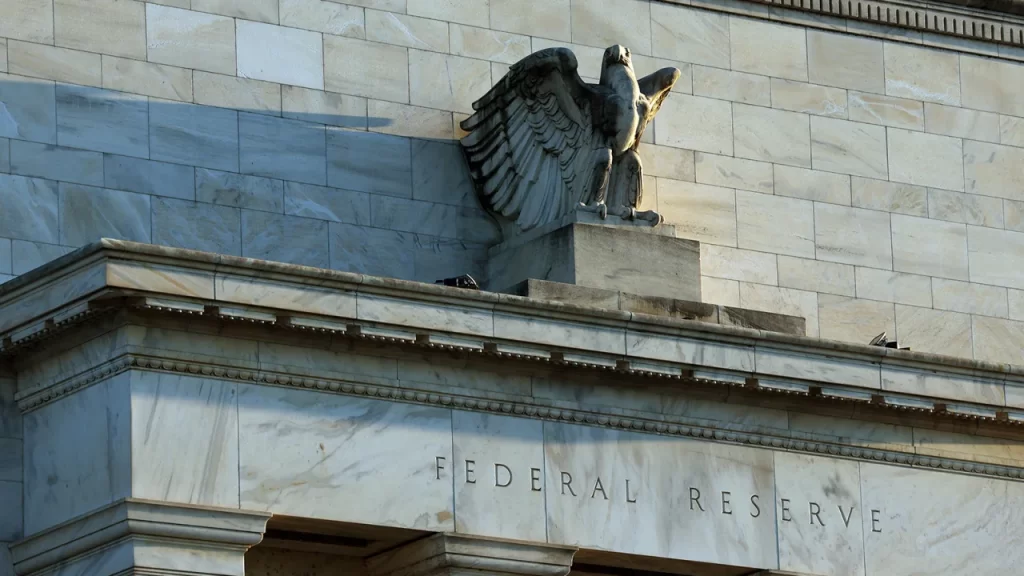The Fed’s fight against inflation is about to enter a new phase, but the central bank’s enormous balance sheet will continue to play a key role.
Over the span of about a year and a half, the Fed aggressively raised interest rates to their highest level in 22 years. That’s the Fed’s most famous tool to keep inflation in check and maximize employment — which are its two fundamental functions as mandated by Congress.
But that’s not the only tool available to the central bank as it currently fights inflation. The Fed also manages a multi-trillion-dollar balance sheet that accounts for trillions in government securities and lists how much currency is in circulation.
It is also used as a macroeconomic tool to either weaken or strengthen the economy.
It seems like the Fed might be done raising interest rates — with the possibility of one more hike in December. But the economy is still expanding robustly, the job market remains tight, and inflation continues to be above the 2% target.
That means the Fed has more work to do to cool the economy. The balance sheet has and will continue to help slow the economy as higher-for-longer interest rates do most of the heavy lifting.
Here’s how it works: The Fed holds assets like Treasuries, mortgage-backed securities, and loans extended to banks. It also holds liabilities such as currency, bank reserves and “reverse repurchase agreements,” which are short-term contracts to sell securities then buy them later at a higher price.
Whenever the Fed wants to stimulate the economy, it expands its securities holdings — a strategy known as “quantitative easing.” It did this to help the economy recover from the Great Recession when the Fed dramatically expanded its assets portfolio from less than a trillion in 2007 to more than $2 trillion by 2009.
In the early days of the Covid-19 pandemic, the Fed sharply beefed up its assets portfolio — purchasing a staggering $1.5 trillion in Treasuries in March and April 2020 to stabilize the financial system and cushion the effects of shutdowns on the economy. It continued to gobble up hundreds of billions in government securities throughout 2020
The Fed has been doing the opposite nowadays. For over a year now, the Fed has been steadily shrinking its balance sheet to help cool the economy. That reduction is known as “quantitative tightening” or a “balance sheet runoff.”
“The balance sheet will play an important role in removing monetary policy accommodation, operating in the background while the federal funds rates serve as our primary active tool,” former Fed Vice Chair Lael Brainard told The Wall Street Journal in 2022 right before the balance sheet runoff and her appointment as vice chair.
The Fed’s balance sheet is currently at around $7.9 trillion, down from its peak of $9 trillion in early 2022 right before the runoff.
What’s next: Wells Fargo economists expect a recession sometime next year to prompt the Fed to cease quantitative tightening around October 2024, leaving the balance sheet at around $7.2 trillion.
“In our view, the [Fed] is unlikely to continue passive monetary policy tightening via [quantitative tightening] during a period of negative GDP growth, rising unemployment and material cuts to the federal funds rate,” they wrote in a recent analysis. They also see alternative scenarios for the end of the balance sheet runoff if there isn’t a recession.
Fed Chair Jerome Powell said in a news conference following the central bank’s July policy decision that quantitative tightening could continue even during rate cuts. Wells Fargo economists say that “would allow the FOMC to attempt to return the balance sheet to roughly its ‘equilibrium’ size.”
How rate hikes work: The Fed decides to either raise, lower or keep unchanged its key federal funds rate at each of its eight scheduled Federal Open Market Committee meetings every year, influencing short-term interest rates across the economy.
Whenever inflation surges, the Fed responds by lifting the fed funds rate, prompting interest rates on a wide range of loan products to follow suit. Those higher lending costs should in turn cool the economy enough to slow price increases, thus stabilizing inflation.
However, whenever a weakening economy pushes unemployment higher, the Fed responds by lowering the fed funds rate, making lending cheaper and shoring up economic growth. Sometimes the Fed leaves interest rates unchanged if officials need more data on the health of the economy or if they think growth is trending in the right direction.
Manipulating the fed funds rate — which is the interest rate commercial banks charge each other when lending excess bank reserves — is the Fed’s most well-known method of making an impact on the economy, since it has a strong effect on the accessibility of credit.
— CutC by cnn.com


